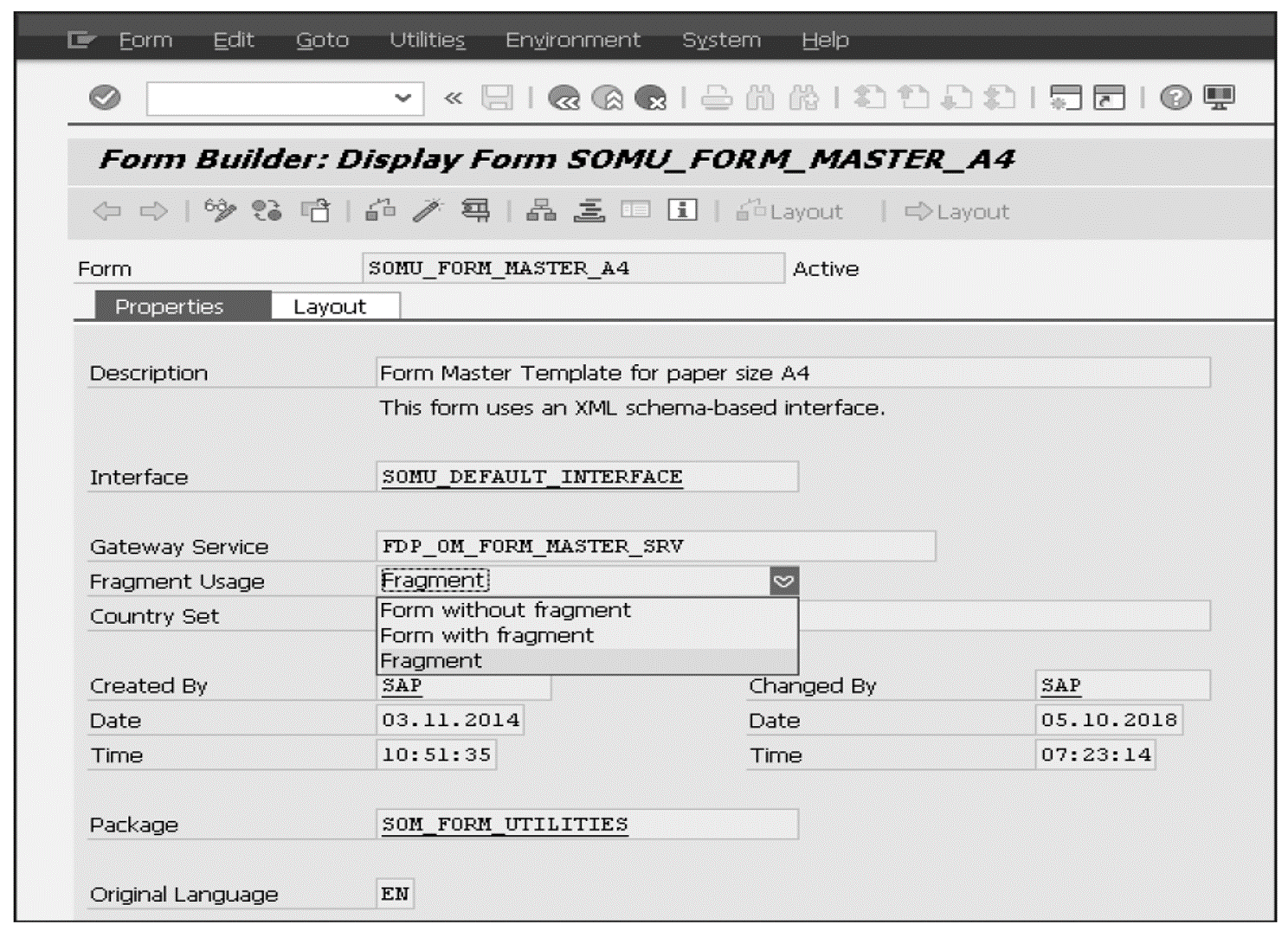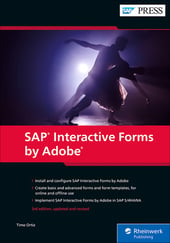For form template reusability in SAP S/4HANA, Adobe has developed fragment-based form templates. There are also changes to the interface used for data retrieval, which we introduce in this blog post.
Master and Content Form Templates
The fragment-based form templates consist of a content template and a master form template.
Master Form Templates
Master form templates include static information such as logos and footer data. This data can be cross-application, but varies from organization to organization. Master form templates contain different layout definitions for the contained master pages. These definitions contain the mentioned static texts, logos, and addresses.
Content form Templates
Content form templates are form templates used for displaying nonstatic and application- related data. At the same time, these form templates use master form templates for displaying data such as logos and footer data.
In addition, there are standalone form templates in SAP S/4HANA that combine all the required data. No master form templates or fragments are used in these form templates. Form templates in SAP S/4HANA are delivered by SAP with as uniform an appearance as possible. This is implemented across applications, except in exceptional cases, such as internal forms. In SAP S/4HANA, most form templates don’t embed a master page but only reference these master pages as fragments. To protect against changes, the fragments embedded in the content form templates are read-only. Changes made to the underlying master pages in the master form templates affect all content form templates referencing them.
The fragments correspond to the different master pages within the master form template; thus, the fragments are components of the master form templates.
Unlike form templates in SAP ERP, fragment-based form templates in SAP S/4HANA must be edited outside SAP GUI. To download the templates, SAP provides the Maintain Form Templates app in SAP Fiori. Editing via Transaction SFP would prevent saving or activating the fragment-based forms. In Transaction SFP, you can identify the fragment- based form templates by the setting Form with fragment or Fragment in the Fragment Usage field (see below).

Implementation of a Corporate Design: For the realization of a company’s own corporate identity, which is mainly focused in the area of forms, the application forms that reference master pages offer numerous advantages. You can think of the application form templates as a framed image. The master page(s) with the fragments represent the picture frame and give the image a basic appearance. The picture frame includes space for the address, logo, and footer, for example. The page content corresponds to the framed image; it contains the application-related data. The overall uniform appearance of the forms is ensured by the picture frame.
In the context of SAP S/4HANA, the term legacy is often used to describe processes that already existed in the old systems before the introduction of SAP S/4HANA and are now being replaced. For example, the terms legacy output processes for message control and legacy forms for SAPscript, smart forms, and PDF-based forms that support the ABAP Dictionary-based interface are common. These forms based on the classic technologies are to be gradually replaced in SAP S/4HANA by standalone, master, and content form templates.
Data Connection for Form Templates
Instead of the previous technology for data retrieval, the ABAP Dictionary-based interface, the data connection for the new fragment-based form templates as well as for the new standalone form templates is established via SAP Gateway services.
At the time of publication, SAP's recommendation is to make adjustments via the Custom Fields and Logic app from SAP Fiori for extensions to the data structure of form templates. If this isn’t possible, the SAP Gateway service used for data retrieval can be extended in the SAP Gateway Service Builder (Transaction SEGW). You shouldn’t create your own SAP Gateway service (see SAP Note 2292646). You should take this recommendation to heart because by rebuilding on the basis of a copy of the original SAP Gateway service, not everything is necessarily copied, and, as a result, a large part of the functions provided by default may be missing.
SAP Gateway is a development framework that provides development and generation tools for creating OData or SAP Gateway services. Through these services, connections can be made from SAP systems to other platforms, other development frameworks, browser-based applications, and other devices.
Editor’s note: This post has been adapted from a section of the book SAP Interactive Forms by Adobe by Timo Ortiz.



Comments